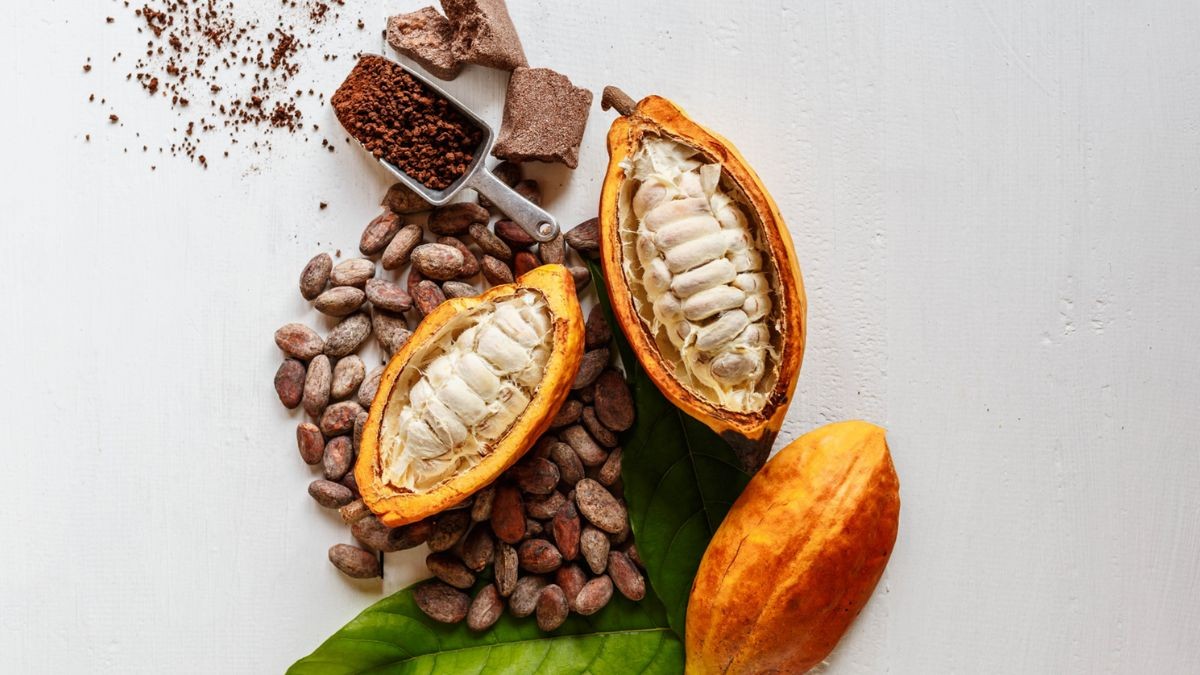How climate change and rising prices are changing the future of the cocoa industry
In a small village in Ghana a cocoa farmer is getting ready to bring in this year's harvest. In the past, he had been able to rely on stable weather conditions, but a great deal has changed over the past few years. Unpredictable rainfall and long dry spells are making growing cocoa more and more difficult. The uncertainties increase every year and thus also the costs.
Whilst the cocoa beans are hanging in the drying sheds during the fermentation process, the farmer thinks about the latest price increases. Cocoa beans are becoming more and more expensive on the global market and every section of the supply chain is feeling the effects. Today, one kilogramme of cocoa costs around US Dollars 4.4 - that is an increase of almost 68% compared to the previous year. The consumers are also feeling the consequences: Chocolate and other cocoa products are becoming more expensive and many people are asking themselves how much they are willing to pay for them in the future.
The pressure resulting from new regulations and the expectations of the consumers
Whilst the farmers are adapting to the new climate conditions, the manufacturers are faced with further challenges. The European Union has passed new laws on protection against deforestation. Companies now have to prove that their products don't cause deforestation. These regulations are indeed important for environmental protection, but they also mean that the production costs will continue to rise.
On the other side of the coin, we have consumers, who are increasingly interested in the origin of their food. A current survey shows that more than half of the consumers pay attention to sustainable labels and prefer products that have been sourced locally. At the same time, many consumers are noticing the price increases and asking themselves whether they are prepared to carry on bearing the costs.
Strategies of the cocoa industry: Means of adapting
In reaction to these challenges, the manufacturers are betting on a host of strategies. Transparent communication is becoming increasingly more important in order to win over the consumers' trust. Companies are telling the stories of the farmers, explaining the reasons for price increases and offering alternatives. Several manufacturers are engaging in "shrinkflation" - they are offering smaller portions for the same prices in a bid to cushion the price increases.
Other brands are experimenting with additional ingredients such as proteins or collagen to lend the products more added value. A further important theme is the search for cocoa alternatives that are less prone to climatic fluctuations and which at the same satisfy the demands in terms of sustainability.

The True Cost of Cocoa: Exploring the Impact of Climate Change and Inflation on Chocolate. © Innova Market Insights
Cocoa alternatives and new technologies
Several companies are treading new paths and developing chocolate alternatives based on other plants such as carob or field beans. These alternatives are often more resilient and can be grown locally, reducing the dependency on traditional cocoa. An example here is the company ChoViva , which produces climate-friendly chocolate totally without cocoa.
Laboratory technology also opens up new possibilities. Companies like Kokomodo and Celleste Bio grow cocoa in controlled laboratory environments, which mirror the tropical conditions. Cocoa bean cells are grown here which can thrive without the use of pesticides or the influence of extreme weather conditions. These approaches offer the possibility of producing cocoa independently from climatic fluctuations and thus secure a more stable future for the chocolate industry.
Sustainability through upcycling and saving resources
In addition to searching for alternatives, manufacturers are also looking into ways of using waste products of the cocoa harvest usefully. Companies like Barry Callebaut use the hitherto by-product cocoa pulp to develop new products like fruit juices and concentrates. In this way, the entire plant is utilised and waste is minimised.
The cocoa industry is faced with big challenges, however the current developments show that innovation and adaptation could enable cocoa and chocolate a sustainable future. Companies and consumers will have to tread new paths in the coming years to align the production of cocoa with the changed conditions - and thus make the chocolate industry more resilient and more sustainable.
Author
Innova Market Insights



